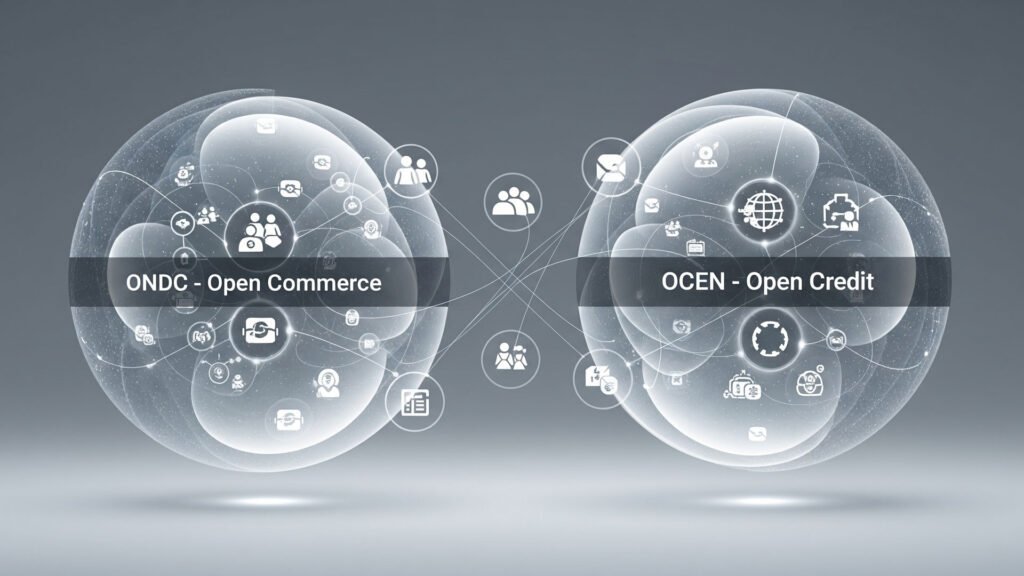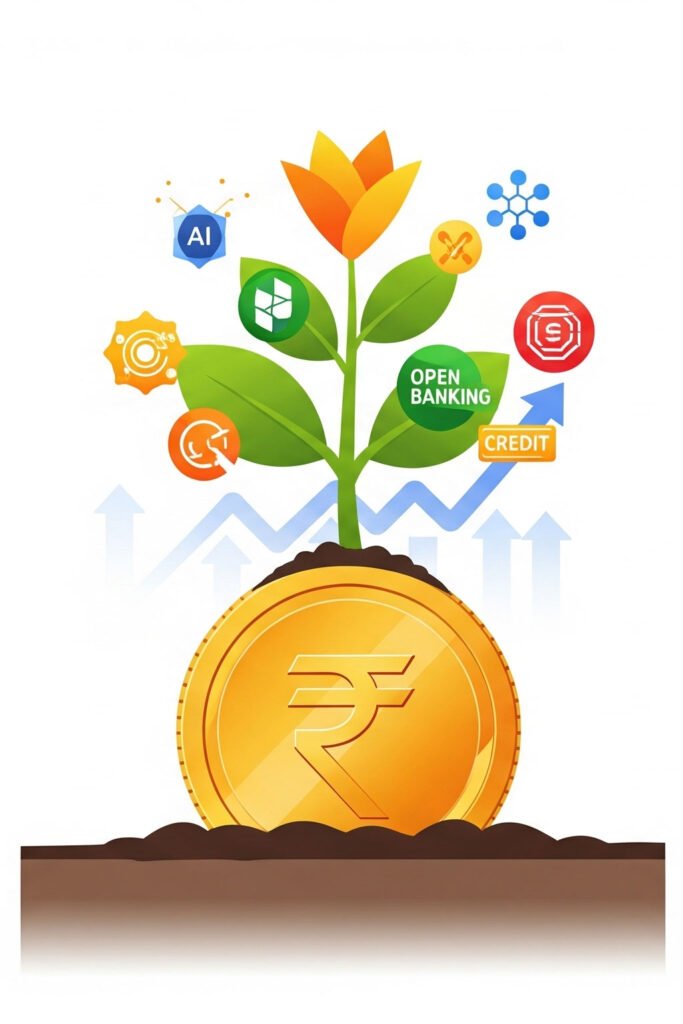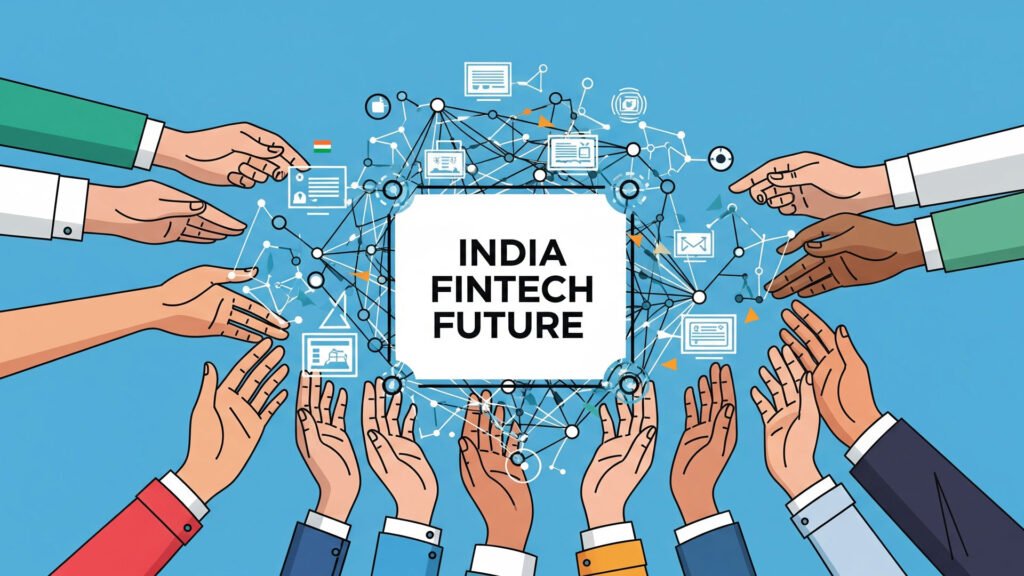India’s digital payment revolution, spearheaded by the Unified Payments Interface (UPI), has set a global benchmark, transforming how an entire nation transacts. With over 100 billion transactions recorded in 2023 alone, UPI’s success story is undeniable, painting a vibrant picture of innovation and adoption.
As this phenomenal wave matures, the crucial question arises: what’s next for India’s dynamic fintech landscape? The nation stands at a new frontier, ready to unlock further innovation and economic value. This article delves into the “next big wave” shaping the India Fintech Future, critically assessing India’s readiness for this transformation. The journey ahead is pivotal for the India Fintech Future.
The Post-UPI Landscape: Defining the “Next Big Wave” for the India Fintech Future
While advancements in areas like Central Bank Digital Currency (CBDC), Artificial Intelligence (AI) in financial services, and embedded finance are all contributing, the most systemic “next big wave” appears to be the era of Open Networks. This isn’t just about new products. It’s about fundamentally redesigning the digital playing field for commerce and credit. These networks build on the principles of interoperability and democratization that made UPI a triumph. They promise to extend digitalization’s benefits to a broader spectrum of economic activity, significantly influencing the India Fintech Future.
Deep Dive: The Rise of Open Networks – ONDC and OCEN
At the heart of this new wave are two flagship initiatives: the Open Network for Digital Commerce (ONDC) and the Open Credit Enablement Network (OCEN).

- ONDC (Open Network for Digital Commerce): Imagine any seller, regardless of size, making their products discoverable to any buyer, on any compatible platform, without being locked into one e-commerce giant. ONDC aims for this. It’s an open, interoperable network to unbundle and democratize e-commerce, like UPI did for payments. ONDC fosters a participant-centric network, not platform-centric. This promotes wider market access, fair competition, and innovation. For businesses, it means lower entry barriers and a larger customer base. For consumers, more choice and potentially better prices.
- OCEN (Open Credit Enablement Network): Access to timely, affordable credit remains a challenge for many in India. OCEN proposes to solve this with an open protocol infrastructure. This allows lenders (banks, NBFCs, fintechs) and “Loan Service Providers” (LSPs) to connect seamlessly. This enables credit flow into various ecosystems, allowing innovative, contextual, sachet-sized loan products at the point of need. For instance, small working capital loans for e-commerce sellers, or invoice discounting in accounting software. OCEN’s goal is to make credit more accessible, affordable, and efficiently delivered, fueling growth critical for the India Fintech Future.
These open networks represent a paradigm shift. They move beyond digitizing existing processes. They reimagine how digital ecosystems for commerce and credit can be structured for broader participation and innovation. Their success is pivotal to charting the India Fintech Future, offering a pathway to a more inclusive digital economy.
Assessing Readiness: Is the India Fintech Future on Solid Ground?

The vision of open networks is compelling. But translating it into reality requires a robust foundation and a proactive approach to challenges. Is India truly prepared for this next leap, so crucial for the India Fintech Future?
Infrastructure & Technology Backbone: A Solid Starting Point
India boasts significant strengths:
- The India Stack: Aadhaar, UPI, DigiLocker, and eSign provide formidable digital public infrastructure, a strong launchpad for ONDC and OCEN.
- High Mobile Penetration & Data Usage: A vast population with smartphones and affordable data is crucial for adoption.
- Growing Digital Literacy: Though disparities exist, digital literacy is improving via government and private efforts.
However, hurdles remain:
- Scalability for Hyper-Growth: ONDC and OCEN aim for massive scale. Underlying tech must handle exponential volumes without glitches. This scalability is a cornerstone for the envisioned India Fintech Future.
- Interoperability Challenges: Ensuring true interoperability between diverse participants needs strong standards and governance.
- The Digital Divide: Significant populations still lack consistent access or skills. Bridging this gap is essential for inclusive growth. See Also: Top 10 Emerging Digital Media Trends 2025 Shaping Entertainment.
Regulatory Framework: A Key Factor for the India Fintech Future
The regulatory environment will be a key determinant.
- Proactive Stance by Regulators: The RBI has generally been proactive, as seen with UPI and Account Aggregators. A similar supportive, yet cautious, approach is needed. For Circulars, visit NCPI Website.
- Data Protection & Governance: The DPDP Act provides a framework. Its implementation and specific guidelines for data sharing, consent, and grievance redressal within open networks will be critical. Clarity and robust enforcement are key.
- Balancing Innovation and Risk: Regulators must foster innovation while safeguarding consumers, ensuring stability, and preventing misuse. Agile rulemaking is essential for a thriving India Fintech Future.
Market Adoption and Ecosystem Development: The Human Element
Technology and regulation are only part of the equation; widespread adoption is crucial.
- Learnings from UPI: UPI’s success was driven by simplicity, low cost, and strong network effects. ONDC and OCEN need similar compelling value propositions.
- Onboarding MSMEs and Small Players: A key ONDC goal is empowering small sellers. Simplifying onboarding, providing technical aid, and ensuring tangible benefits are vital. For OCEN, encouraging smaller lenders is important.
- Building Trust and Awareness: Educating users about benefits and workings, and ensuring robust dispute resolution, are necessary.
- Developing a Vibrant Ecosystem: Success depends on a thriving ecosystem of tech providers, developers, and support services.
Security and Data Privacy in an Open Ecosystem: Non-Negotiables
Openness can introduce new vulnerabilities.
- Cybersecurity Threats: More interconnected systems mean a larger attack surface. Robust protocols and monitoring are non-negotiable.
- Consent Management: Clear, granular, easily revocable consent for data sharing is fundamental.
- Preventing Data Monopolies: While promoting openness, preventing new data concentration is crucial.
Addressing these concerns proactively is essential for the sustainable growth of the India Fintech Future.
Opportunities for Innovation and Investment in the India Fintech Future

Despite challenges, ONDC and OCEN unlock immense opportunities, significantly shaping the India Fintech Future:
- New Business Models: Fintechs can build innovative solutions – specialized lending on OCEN, hyperlocal commerce on ONDC.
- Enhanced Financial Inclusion: OCEN can help extend formal credit to underserved segments.
- Boost for MSMEs: ONDC can provide MSMEs direct access to larger markets, improving competitiveness.
- Data-Driven Insights: Aggregated data can yield valuable insights for product development and risk management.
- Increased Investment: A larger digital market will likely attract more investment into Indian tech and fintech.
The Path Forward: Key Steps to Unlock the Potential

To navigate complexities and realize full potential, a concerted effort is required:
- Collaborative Governance: Strong collaboration between government, regulators, industry, and tech providers is key.
- Phased Rollout and Iteration: A phased rollout with continuous feedback, like UPI, is advisable.
- Focus on Financial and Digital Literacy: Nationwide campaigns to educate users are critical.
- Investment in Skill Development: Creating a skilled talent pool is vital.
- Robust Infrastructure Upgrades: Continuous investment in scalable, secure digital infrastructure is necessary.
- Incentivizing Early Adoption: Targeted incentives can help kickstart network effects.
Conclusion: Is India Ready? The Verdict for the Next Chapter in the India Fintech Future
So, is India ready for the next big wave after UPI? The answer is a qualified “yes.” India has foundational digital public infrastructure, a vibrant startup ecosystem, and regulatory intent leaning towards innovation. The vision for an open, interconnected digital economy driven by ONDC and OCEN is transformative. It aligns perfectly with the nation’s aspirations for its India Fintech Future.
However, the path is not without significant hurdles. Addressing scalability concerns, ensuring robust data security and privacy, fostering widespread digital literacy, and creating an agile regulatory framework are critical challenges. These need proactive management.
The India Fintech Future is incredibly bright, with potential for unprecedented economic value and inclusivity. The journey from UPI’s payment dominance to a broader, networked digital economy for commerce and credit will be complex. It is undoubtedly the next frontier. Success will depend on sustained collaboration, strategic investment, and an unwavering commitment to building trust. The next few years will be crucial in determining how effectively India navigates this exciting chapter.














